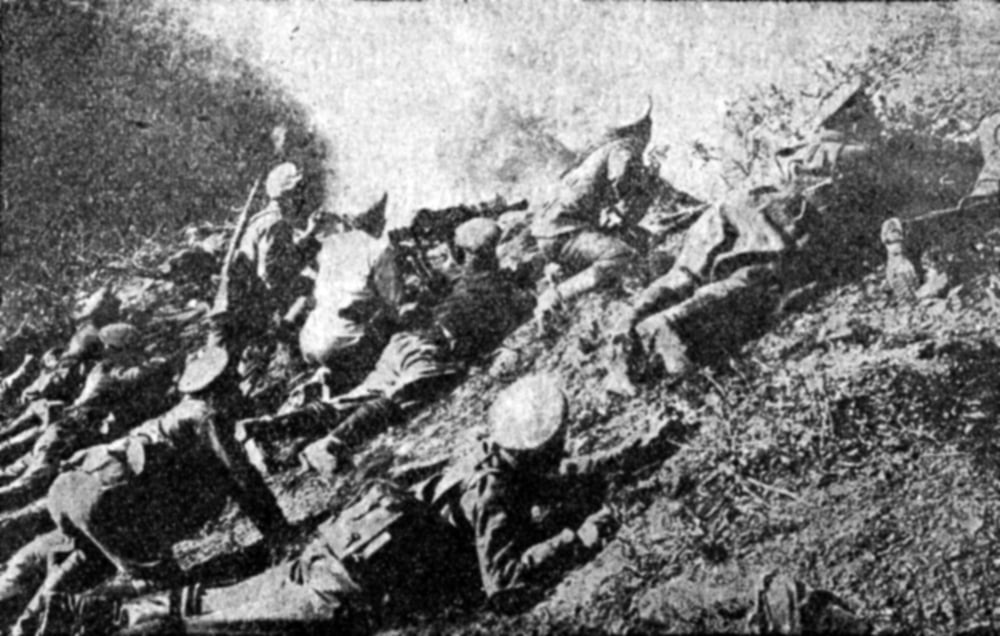The Two Towers by J.R.R Tolkien (Harper Collins 1991, 2007) pp. 682-691
It is important at the outset of these thoughts on warfare in The Lord of the Rings to note that from the arraying of Aragorn, Legolas and Gimli in gear of warfare before the gates of Edoras to the final victory over the hosts of Isengard before Helm’s Deep there are only twenty-seven pages in the Harper Collins edition of The Two Towers. Compare that to the amount of time devoted to the battle in Peter Jackson’s film of the same name and even before we think about the battle at all we see that this Hollywood action movie treats warfare very differently to the way in which Tolkien does.
Tolkien’s personal experience of warfare was very different to that of the armies who fight in his great story. Harold MacMillan, who was the British Prime Minister in the late 1950s and early 1960s was a fellow officer to Tolkien at the Battle of the Somme in 1916 on whose first day the British army lost 60,000 men killed and wounded. MacMillan was himself one of the wounded and spent several hours hiding in a shell hole and reading Aeschylus in Greek to distract himself from the pain before before being found by British soldiers. In a letter of the time he wrote that “perhaps the most extraordinary thing about a modern battlefield is the desolation and emptiness of it all… One can look for miles and see no human being. But in those miles of country lurk (like moles or rats, it seems) thousands, even hundreds of thousands of men, planning against each other perpetually some new device of death. Never showing themselves, they launch at each other bullet, bomb, aerial torpedo, and shell.”

Harold MacMillan as a young infantry officer.
It was a shell that hit and wounded MacMillan as he led an advance of his men towards the German lines. I quote these lines in a reflection upon Tolkien because they describe with dreadful eloquence the experience of warfare shared by soldiers of both sides in that dreadful conflict and contrast so starkly with the language that Tolkien uses to describe the ride of the Rohirrim to Helm’s Deep. Not that Tolkien ignores the horror of war. Théoden describes the hosts of Isengard as they advance “burning as they come, rick, cot and tree”. But he also writes of the beauty of a host of men about to ride out in defence of their homes and families.
“At the gate they found a great host of men, old and young, all ready in the saddle. More than a thousand were there mustered. Their spears were like a springing wood. Loudly and joyously they shouted as Théoden came forth.”

The Riders of Rohan
Tolkien profoundly understood the contrast between the desolate horror that MacMillan described and the heroic language that he used in his own descriptions of battle. Indeed he expressed that contrast in his distinction between the orcs of Mordor and Isengard and, for example, the Riders of Rohan. While the armies of Saruman and of Sauron use all the devices available to them of industrial warfare, the Rohirrim ride into battle carrying spear and sword; and Tolkien’s account is full of acts of individual heroism on the part of the defenders of Helm’s Deep while their enemies are faceless.
What Tolkien achieved in The Lord of the Rings was a restoration of humanity in the brutal and faceless experience of warfare that he knew and which MacMillan described. This means that he is a genuinely modern writer whose war literature can be included alongside A Farewell to Arms by Ernest Hemingway or Robert Graves Goodbye to All That. But whereas Hemingway and Graves seek, with great success, to express the experience that MacMillan describes, Tolkien does something quite different. He attempts a kind of redemption of the brutal experience of warfare by restoring the heroic to it. While he understood the experience that Wilfred Owen described in speaking of “these who die as cattle” he restores to those who die a human face and personal heroism.

“What passing bells for these who die as cattle?”
But I must end where I began. Tolkien never sought to glorify war in his writings. This is perhaps best and most explicitly expressed by Faramir who is a warrior by necessity and not by choice and, of all the characters in The Lord of the Rings speaks most in Tolkien’s own voice.
“War must be, while we defend our lives against a destroyer who would devour all, but I do not love the bright sword for its sharpness, nor the arrow for its swiftness, nor the warrior for his glory. I love only that which they defend.”





